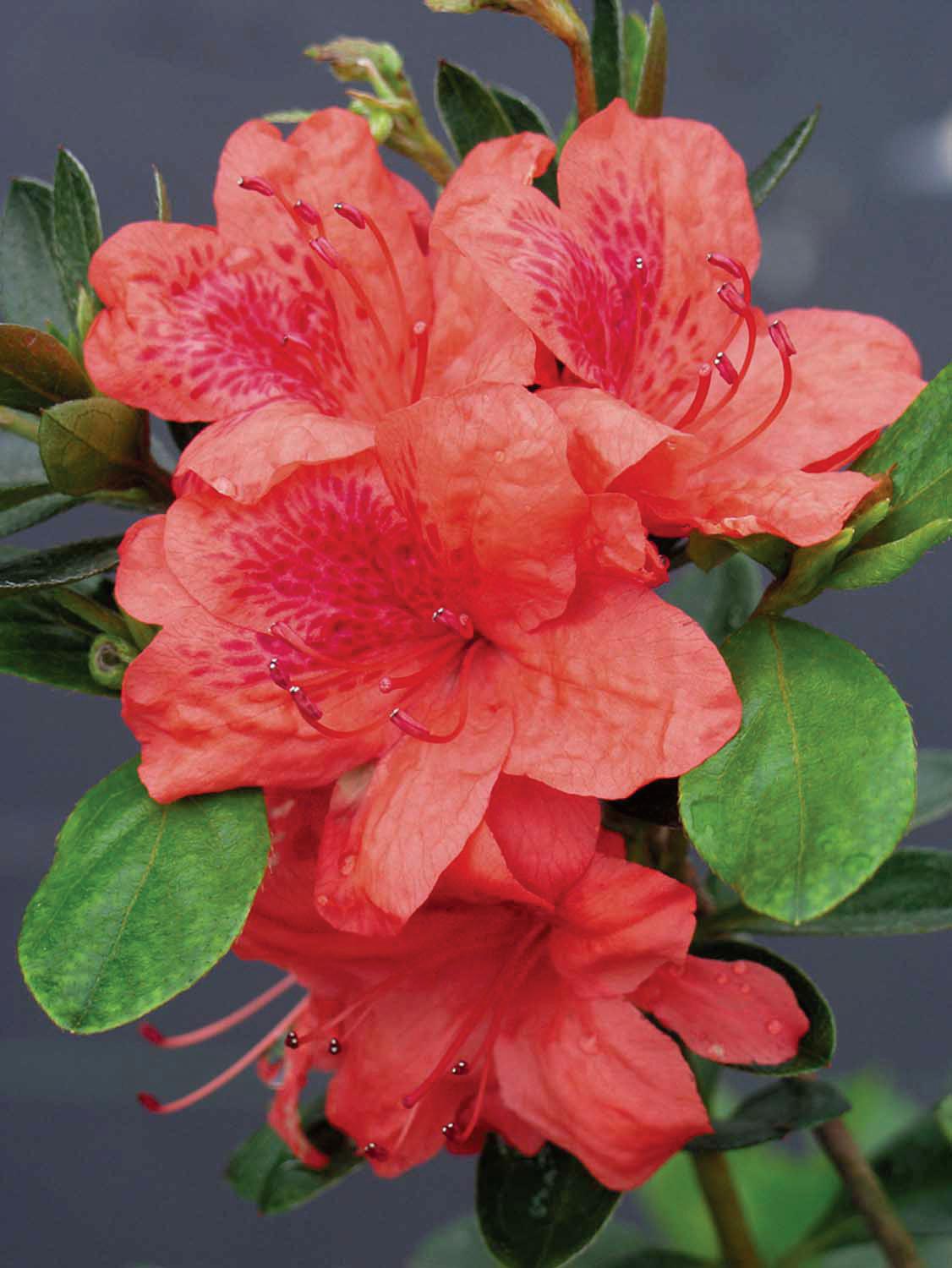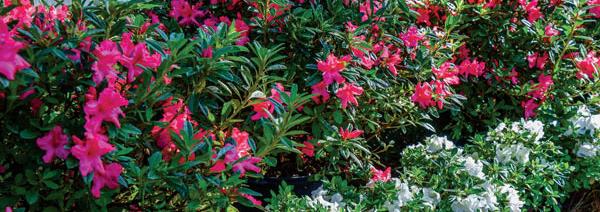
4 minute read
Creative Corner The Club
There is a club.
The grieving parents club. You can’t be in it ‘til you’re in it. You can try to understand and sympathize, but it’s not until you feel that loss that you truly understand-the sleepless nights; crying uncontrollably at the slightest thing; having to force yourself out of bed and be a semi-functional human for the day; forgetting to pay your bills (if they aren’t on autopay); and not buying food until you are down to bare cupboards.
Life, as we knew it, will never be the same-this is our new normal.
My thoughts and prayers to each and every parent that has been forced by GOD’S will to become a member of this club.
Much Love, Stephen’s Mom

By Kim Bius

The Azalea……….. Spring’s Grande Dame
So often we hear gardeners say, “I can’t grow azaleas; they always die.” There are generally two reasons for this: lack of consistent watering and an ill-prepared bed.
Azaleas are stepsiblings of the cool-weather-loving northern rhododendron. Azaleas are actually very easy to grow, but their requirements are very specific. They are acid lovers, thus most soils in our area are their native habitat. Azaleas love rich, loamy soil and prefer raised beds, especially when poor drainage can become an issue. A perfect bed is raised 4” and contains 1/3 peat moss, 1/3 heavy humus, and 1/3 growers mix or a sandy topsoil (no clay).
Azaleas will tolerate full west sun exposure to a shady habitat, making them extremely versatile. Very sunny areas require additional irrigation, and heavy shade areas do not produce blooms.
New plantings will not have an established root system and will require consistent watering at least 3-4 times a week on a 3-gallon size or larger. One-gallon azaleas are 1.5-2 years younger and will require more care in becoming established. The small root ball on a 1-gallon container can easily dry out within 2 days and show damage on day 5. Three gallon or larger azaleas are generally recommended for planting unless you are a diligent gardener.
Maintenance is easy. Pruning is done once a year, after the last bloom fades. Trim all top shoots back to the main “ball,” generally 2’-3’ shorter than the overall growth. Do not be afraid to cut them back 50% if they have grown too large for their area. You will see bare stalks for several weeks, but new growth will appear--in 6 weeks, the dramatic pruning will not be visible. Azaleas must be pruned yearly for best appearance. The leggy, scraggly azalea has been unpruned and is not getting the water it requires to be the beauty it was meant to be.
Azaleas are fertilized twice a year with azalea fertilizer. Use after pruning and again in 6 weeks. Do not fertilize prior to or during blooming. Liquid or granular iron is often needed several times a year because our soils are easily depleted of iron in heavy rains. Limey colored leaves with dark green stems are signs of iron deficiency.


Azaleas do have a few insects/diseases to watch for. Lacebugs can be spotted by mottled leafs that have turned “crispy, white, and devoid of chlorophyl.” Turn the leaf over and you will see hundreds of black and rust colored dots of lacebug poop.
A systemic liquid insecticide followed by a systemic granular is the best line of defense against repeated infestations. Rust is your next enemy. This fungi affects plants in rainy seasons and is apparent by the rusty powder on the topside of leaves. A systemic fungicide will keep this at bay.
Azaleas are available in a wide range of varieties, colors, and sizes. The miniatures are the Gumpos. These little guys resemble a helleri holly in mounding growth to a height of 2 ½’ x 2 ½’. They bloom a bit later, but will sometimes “throw” a few single sporadic blooms during the summer and fall months. Gumpos have large blooms of white or medium pink. This series makes a great border for an existing bed or by themselves in areas that cannot have height.
The semi-dwarfs to dwarfs are a large grouping of azaleas that range in height from 3’ to 5’. Kurume and various other hybrids make up the population of this group. The varieties of semi-dwarfs are almost endless, but we will touch on the most popular in East Texas.
Red Ruffle – large pink/red double bloom, 3’-5’ plant. Easily pruned after blooming to keep them more compact.
Pink Ruffle- large baby pink double bloom, grows a bit taller than red ruffle, if left unpruned.
Fashion – orange/pink bloom, blooms spring and fall. Deep bronzecolored leaves in fall, 3’-4’ plant.
Snow – double white, blooms profusely, spring bloom only.
Christmas Cheer – cherry red bloom, spring and sporadically at Christmas.
Sunglow – blooms later than others, neon pink, blooms into May.
The Encore series has many varieties that fit the semi-dwarf category. These azaleas will bloom heavily spring and fall and sporadically throughout the year. The kickback on these is the price. Encore azaleas are patented, so plan on paying double for these varieties that can be easily mixed with your standard azaleas.



The Southern Indicas are the largest group of azaleas. These hardy azaleas can easily reach 8’ tall x 6’ wide, if left unpruned. They are at their “prettiest” in full spring bloom and should be pruned (heavily or lightly) after blooming and maintained at the 3’- 4’ range or greater.
Purple Formosa produces a raspberry/purple bloom and is the true Formosa of the south; Red Formosa produces a ruby/magenta bloom and is easily detectable by its “hairy” leaves; the Pink Formosa produces a fuschia pink bloom; the G.G. Gerbing produces a large, white blooms and is most susceptible to rust and blight; and the George Tabor is pale pink with a purple throat and always a showstopper.
Happy Gardening….Hurray for spring!










